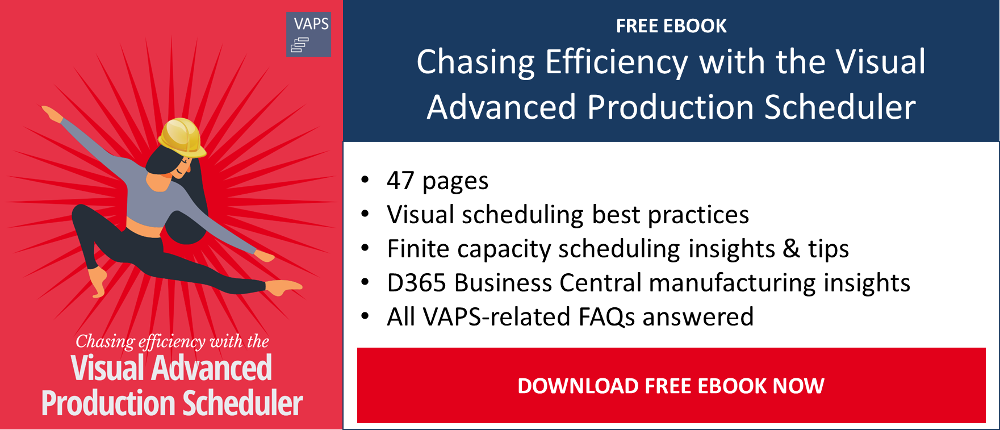With the planning worksheet and MRP (material requirements planning), Microsoft Dynamics 365 Business Central offers a both efficient and powerful tool for achieving the equilibrium of item demand and item supply. As such, the planning worksheet obviously (automatically) creates production orders to meet a certain demand. However, this creation of the production orders is purely demand-driven and does not take into account the current schedule especially with respect to work/machine center load.
Finite capacity scheduling (e.g. of those production orders that were created via the planning worksheet) is achieved by using the Visual Advanced Production Scheduler (VAPS). However, combining MRP and finite capacity scheduling can be tricky. The big question here is: Which tool should take control over which production orders? Hence, this blog outlines how to best utilize MRP together with the VAPS (instead of both tools working against each other).
Since this is a blog about the VAPS, I won't go into all details of MRP and the planning worksheet but just want to show you how the two work hand in hand. Let me illustrate this with some really simple sample data.
Demand forecast as basis for your planning
The weekly demand forecast of the picture below shows sample items with "production order" as replenishment system: whenever there is a demand for this item it needs to be produced.

Based on this demand you now create a plan that tells you what kind of production orders is needed for this period of time.
Planning worksheet shows you what needs to be done
For this, you need the planning worksheet where you calculate a regenerative plan. To fulfill the above shown demand, the plan suggests which production orders need to be created, rescheduled, or canceled.
.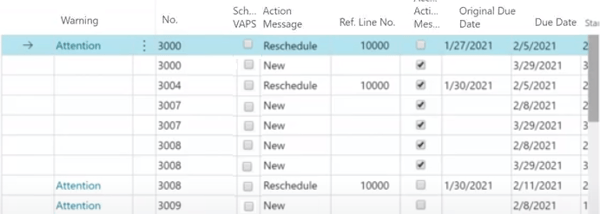
After having decided which suggestions to accept and which to reject, you carry out the messages. Let's assume you accept all suggestions from the above worksheet so that by carrying out the messages you will create a couple of new firm planned production orders which you will find on the Standby Resource in the VAPS (remember: the Standby Resource is the place where we show all production orders that were added/changed in Business Central and not yet scheduled with the VAPS).

Add all orders to your plan in one go
Now - and this really nice function makes your life as a planner much more comfortable - you can use the "Add all" function (with or without considering alternate machine centers) to schedule all production orders from the Standby Resource in one go. This scheduling instrument schedules all operations from standby to the scheduling - following clear rules in terms of prioritization of production orders and scheduling direction (asap).
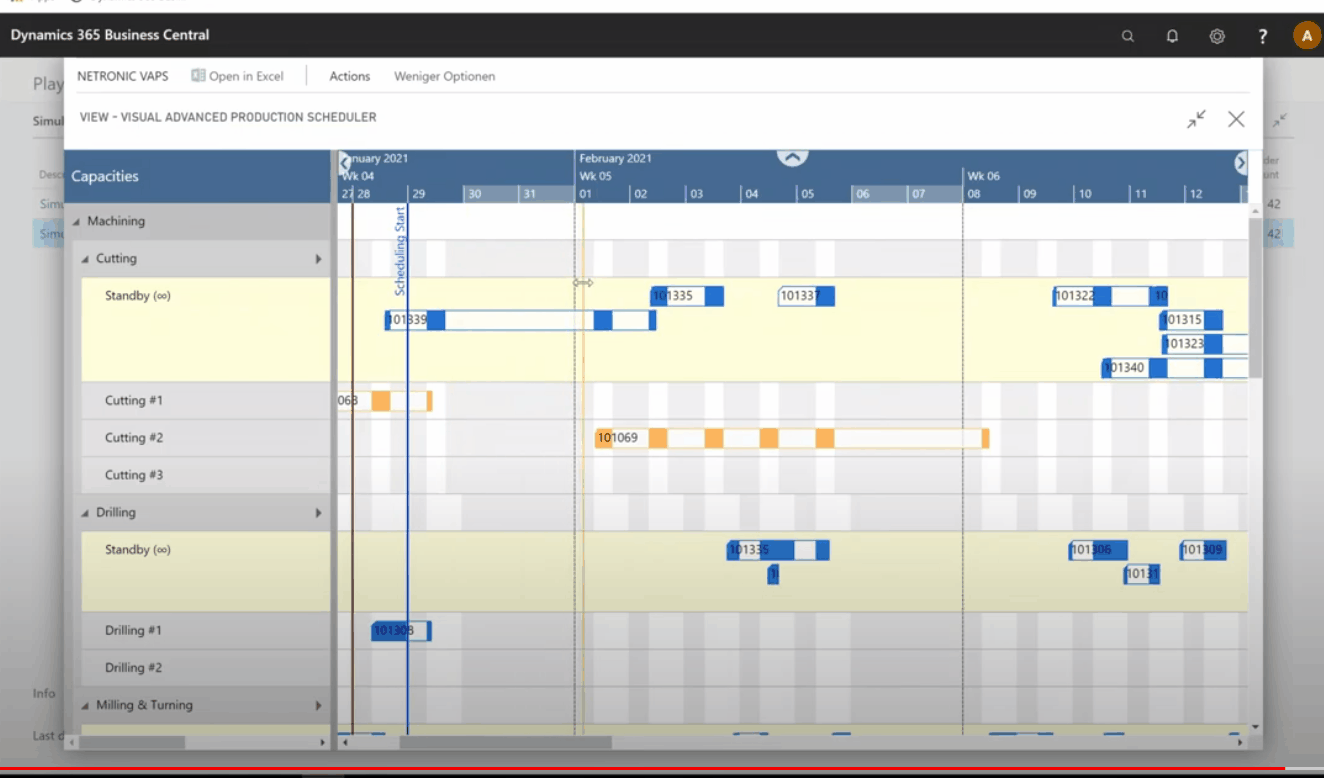
Important option: Decide which orders are to be left untouched by MRP
As of version 1.3 of the VAPS, we have gained an even better cooperation and closer interweaving between the finite capacity scheduling (VAPS) and the planning worksheet (MRP).
The VAPS is responsible for the shorter-term finite capacity scheduling, whereas MRP and the planning worksheet are responsible for the mid-term demand planning. The improved VAPS/MRP integration establishes clear rules as to - depending on their status - which production orders belong into the VAPS area of responsibility and hence will remain untouched by the planning worksheet. The below chart summarizes these areas of responsibility:
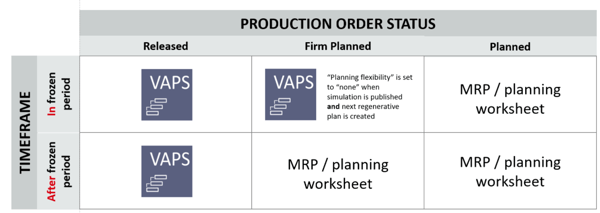
For setting the above mentioned rules, the VAPS offers a couple of settings and functions which are explained in detail in our knowledge base and the according blog.
The MRP view of the VAPS lets you quickly identify the production orders belonging to the VAPS area of responsibility (orange) and those belonging to the MRP area of responsibility (blue).
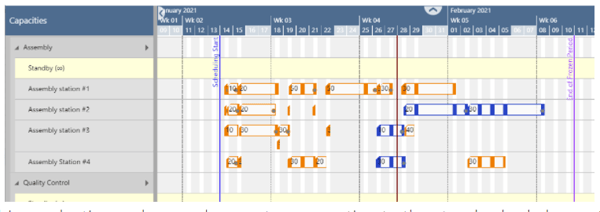
I hope my little example has vividly shown you how the VAPS helps you to easily and quickly add a bunch of production orders to your schedule that were created by MRP .
VPS or VAPS?
If you are currently using the Visual Production Scheduler and wondering whether you should switch to the VAPS, our recommendation would be that the more production orders you have to deal with and the more you work with MRP, you should use a tool like the VAPS so that you can properly schedule with finite capacities.
Want to take a deeper dive into the VAPS?
- Watch a recorded webinar about the Visual Advanced Production Scheduler.
- Book a free demo with a VAPS specialist.
- Get your free copy of our comprehensive eBook:


